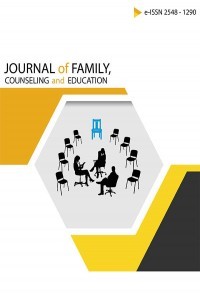Research on Community Violence against Adolescents in Kosovo and related Variables
Research on Community Violence against Adolescents in Kosovo and related Variables
The main purpose of this study was to conduct a research about the prevalence of violence against adolescents in the community, the types’ prevalence of the violence; people who the most frequent use violence against adolescents, and the relationship between the types of violence and adolescents’ demographic factors (gender, age and residence). The study was conducted in a sample of 608 adolescents from 10 Pristina’s high schools, aged 15-18. For this study are used quantitative methods in fact survey type, while as the main instrument for data collection was used the questionnaire. The study's findings show that 9 out of 10 adolescents have experienced community violence (approximately 92%), of whom 1 out of 9 adolescents high-level violence. From the types of violence, psychological violence is the most prevalent violence followed by violence against property, physical violence and sexual violence. The results of the study show that people who use more violence against adolescents are their peers, then adults and at the lowest level of violence are used by certain groups. Males, whether they are peers or adults, are the ones who use more violence against adolescents than females. When we talking about demographic characteristics and their relation to the types’ prevalence of the violence, gender and residence of adolescents results to have an impact only on physical violence, but not on the other types of violence, while adolescents’ age, being almost the same, results without any impact on the types’ prevalence of the violence. Concerning these findings, have been addressed specific recommendations, the main purpose of which is to raise awareness and prevent violence in society in general and to children and youth in particular.
Keywords:
Adolescents, violence, community, psychological violence, violence against property physical violence and sexual violence,
___
- Ellonen, N., Käriäinen, J., Salmi, V. and Sariola, H., (2008). Violence against Children and Adolescents in Finland. National Research Institute. Research of Legal Policy. Communications no. 87
- Finkelhor, D. (2008). Childhood Victimization. Violence, Crime, and Abuse in the Lives of Young People. Oxford University Press. Oxford, New York.
- Finkelhor, D. and Dziuba-Leatherman, J. (1994). Children as Victim of Violence: A National Survey. Pediatrics, Vol. 94, No. 4, pp. 413 – 420.
- Finkelhor, D. and Ormrod, R. (2000). Juvenile Victims of Property Crimes. (NCJ184740). Washington, DC: U.S. Department of Justice, Office of Juvenile Delinquency and Prevention
- Finkelhor, D., Ormrod, R. K., Turner, H.A, Hamby, S.L (2005). Measuring Poly-Victimization Using the Juvenile Victimization Questionnaire. Child Abuse & Neglect 29 (2005) 1297–1312.
- Finkelhor, D., Turner, H., Ormrod, R., Hamby, S., and Kracke, K. (2009). Children’s Exposure to Violence: A Comprehensive National Survey. Juvenile Justice Bulletin.
- Hamby, S. L., Finkelhor, D., Ormrod, R., & Turner, H. (2005). The Juvenile Victimization Questionnaire (JVQ): Administration and Scoring Manual. Durham, NH: Crimes against Children Research Center
- Krug, E.G., Dahlberg, L.L., Mercy, J.M., Zwi, A.B. and Lozano. R., (Eds).(2002). World report on violence and health. Geneva, World Health Organization.
- Margolin, G. and Gordis, E.B., (2004). Children’s Exposure to Violence in the Family and Community. American Psychological Society. Volume 13. Number 4, pp. 152 – 156.
- O’Keefe, M., (1997). Adolescents’ Exposure to Community and School Violence: Prevalence and Behavioral Correlates. Journal of Adolescent Health, 1997; 20:368-376.
- Pinheiro, P. S. (2006). World Report on Violence against Children. Geneva. Published by the United Nations Secretary-General’s Study on Violence against Children. Geneva, ATAR RotoPresse SA.
- Salzinger, S., Feldman, R.S., Stockhammer, T., Hood, J., (2002). An ecological framework for understanding risk for exposure to community violence and the effects of exposure on children and adolescents. Aggression and Violent Behavior 7 (2002) 423–451.
- Sheidow, A.J., Garman-Smith, D., Tolan, P.H., Henry, D.D., (2001). Family and Community Characteristics Risk Factor for Violence Exposure in Inner-City Youth. Journal of Community Psychology, Vol. 29, No. 3, 345–360 (2001).
- Tolan, P.T. and Guerra, N., (1998). Societal Causes of Violence against Children. In: Trickett, P. K. and Schellenbach, C. J. (Eds.). (1998). Violence against children in the family and the community. Washington, DC, US: American Psychological Association
- Whitbeck, L.B. & Simons, R.L, (1990). Life on the streets: the victimization of runaway and homeless adolescents. Youth and Society, 22, 108 – 125
- Yayın Aralığı: Yılda 2 Sayı
- Başlangıç: 2016
- Yayıncı: Eyüp ÇELİK
Sayıdaki Diğer Makaleler
Adaptation of Positive Mental Health Scale into Turkish: A Validity and Reliability Study
Aynur YILMAZ AKBABA, Jale ELDELEKLİOĞLU
An Investigation into the Relationship between Turkish EFL Teachers’ Self-Efficacy and Burnout Level
Research on Community Violence against Adolescents in Kosovo and related Variables
OKUL ÖNCESİ ÖĞRETMENLERİNİN SINIF YÖNETİMİ BECERİ DÜZEYLERİ
Zehra Betül YAMAN, Ömer Faruk TUTKUN
Evaluation by the School Managers of Raising Program in Primary Schools (RPIPS)
